Country
code
Okinawa
Ground fire of a Boeing 737-809 in Naha
Date & Time:
Aug 20, 2007 at 1033 LT
Registration:
B-18616
Survivors:
Yes
Schedule:
Taipei - Naha
MSN:
30175/1182
YOM:
2002
Flight number:
CI120
Crew on board:
8
Crew fatalities:
Pax on board:
157
Pax fatalities:
Other fatalities:
Total fatalities:
0
Captain / Total hours on type:
3823.00
Copilot / Total hours on type:
182
Aircraft flight hours:
13664
Circumstances:
The aircraft departed Taipei-Taoyuan Airport at 0814LT on a schedule service to Naha with 157 passengers and a crew of 8. Following an uneventful flight, the crew was cleared to land on runway 18 and vacated via taxiway E6 then A5. After being stopped at spot 41, engines were shot down when a fire broke out somewhere in an area aft of the right engine and spread to the right wing leading edge near the n°5 slat and the apron surface below the right engine. All 165 occupants evacuated safely while the aircraft was totally destroyed by fire.
Probable cause:
It is considered highly probable that this accident occurred through the following causal chain: When the Aircraft retracted the slats after landing at Naha Airport, the track can that housed the inboard main track of the No. 5 slat on the right wing was punctured, creating a hole. Fuel leaked out through the hole, reaching the outside of the wing. A fire started when the leaked fuel came into contact with high-temperature areas on the right engine after the Aircraft stopped in its assigned spot, and the Aircraft burned out after several explosions. With regard to the cause of the puncture in the track can, it is certain that the downstop assembly having detached from the aft end of the above-mentioned inboard main track fell off into the track can, and when the slat was retracted, the assembly was pressed by the track against the track can and punctured it. With regard to the cause of the detachment of the downstop assembly, it is considered highly probable that during the maintenance works for preventing the nut from loosening, which the Company carried out on the downstop assembly about one and a half months prior to the accident based on the Service Letter from the manufacturer of the Aircraft, the washer on the nut side of the assembly fell off, following which the downstop on the nut side of the assembly fell off and then the downstop assembly eventually fell off the track. It is considered highly probable that a factor contributing to the detachment of the downstop assembly was the design of the downstop assembly, which was unable to prevent the assembly from falling off if the washer is not installed. With regard to the detachment of the washer, it is considered probable that the following factors contributed to this: Despite the fact that the nut was in a location difficult to access during the maintenance works, neither the manufacturer of the Aircraft nor the Company had paid sufficient attention to this when preparing the Service Letter and Engineering Order job card, respectively. Also, neither the maintenance operator nor the job supervisor reported the difficulty of the job to the one who had ordered the job.
Final Report:


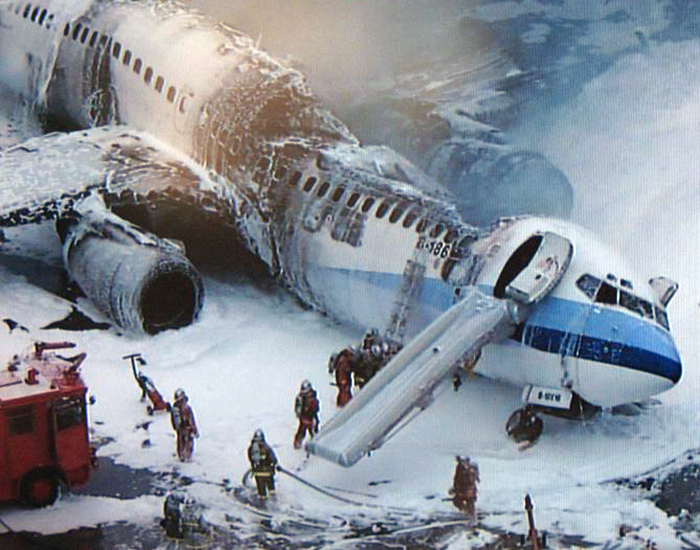
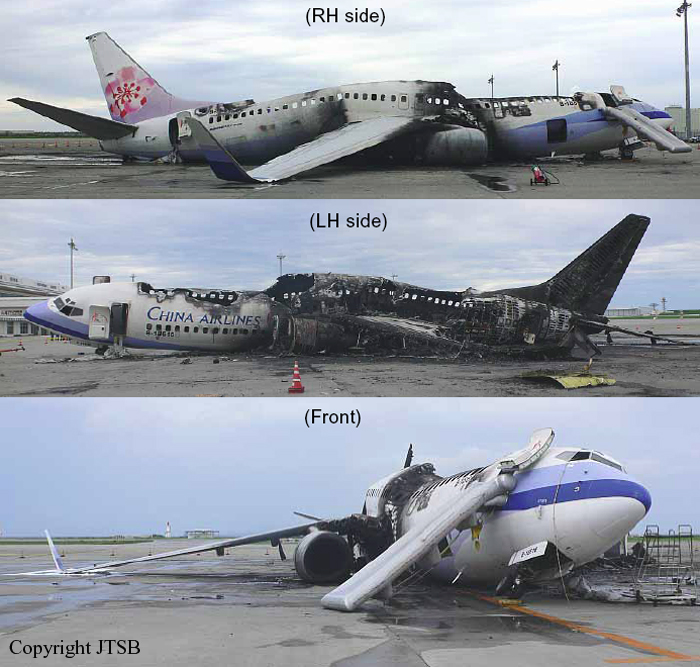
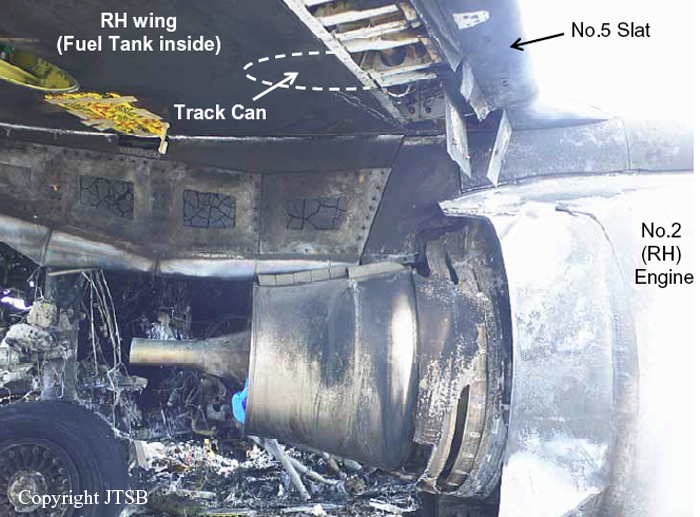

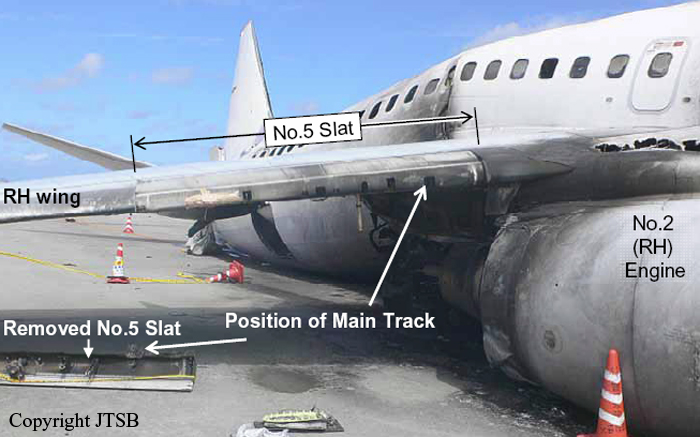
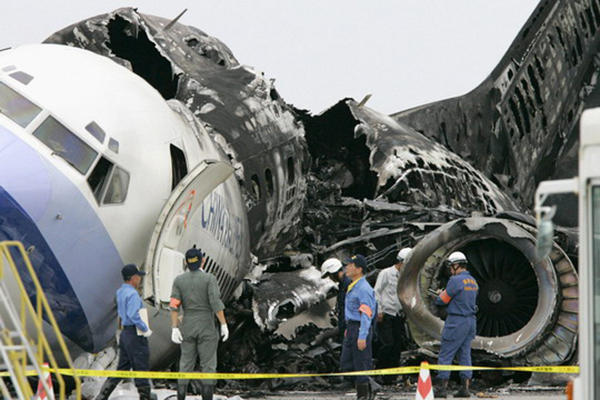
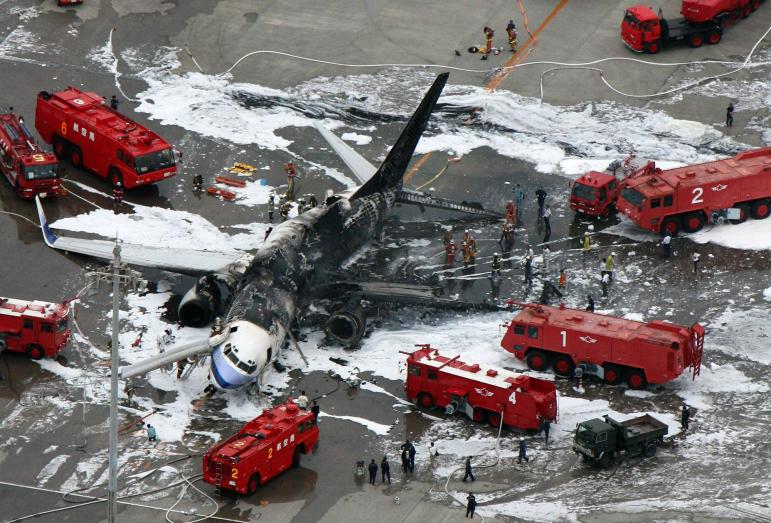
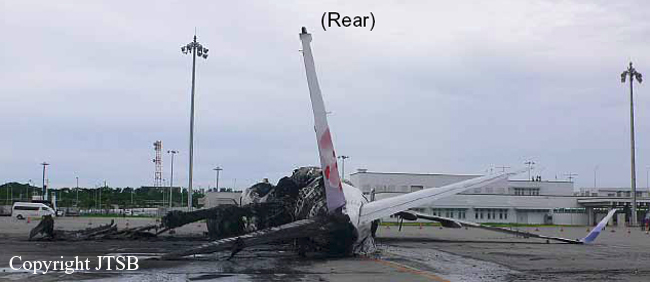
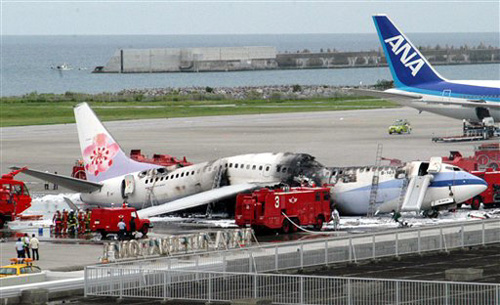
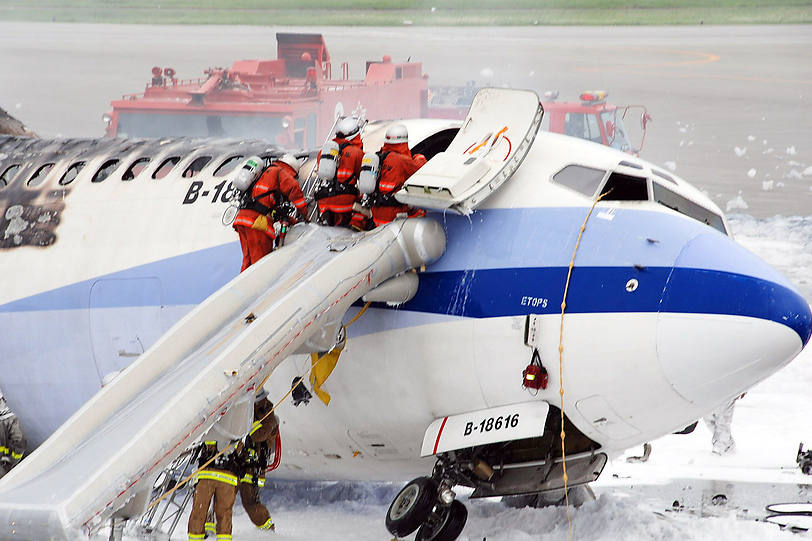
Crash of a Boeing 767-281 in Shimoji-shima
Date & Time:
Jun 26, 2002 at 1254 LT
Registration:
JA8254
Survivors:
Yes
Schedule:
Shimoji-shima - Shimoji-shima
MSN:
23433
YOM:
1987
Flight number:
NH8254
Crew on board:
3
Crew fatalities:
Pax on board:
0
Pax fatalities:
Other fatalities:
Total fatalities:
0
Captain / Total hours on type:
6654.00
Copilot / Total hours on type:
5
Aircraft flight hours:
35347
Circumstances:
On June 26, 2002, a Boeing 767-200 of All Nippon Airways, registration JA8254, took off from Shimoji-Shima Airport at around 11:32 on a flight for takeoff and landing training. The flight plan of the aircraft submitted to the Shimoji-Shima Airport Office of the Japan Civil Aviation Bureau (CAB) was as follows: FLIGHT RULES: VFR, AERODROME of DEPARTURE: Shimoji-Shima Airport, TIME: 11:20, CRUISING SPEED: 250kt, LEVEL: VFR, ROUTE: Traffic Pattern, DESTINATION AERODROME: Shimoji-Shima Airport, FLIGHT PURPOSE: Training Flight, TOTAL EET: 1 hour 40 minutes, ENDURANCE: 6 hrs 32 minutes, PERSONS ON BOARD: 3. The three persons on board were in the cockpit at the time of the accident: A pilot undergoing training for promotion to First Officer (Trainee Pilot-A) occupying the left pilot’s seat, the Captain acting as instructor occupying the right pilot’s seat, and another pilot undergoing training for promotion to First Officer (Trainee Pilot-B) occupying the left observer’s seat. First, Trainee Pilot-B made seven landings on runway 17 from the left pilot’s seat, including two landings with one engine simulated inoperative, and a go-around with both engines operative. He then changed places with Trainee Pilot-A. At around that time, the wind direction changed from the south to the west, and the aerodrome control tower instructed a change to runway 35. Trainee Pilot-A then made two landings on runway 35 with both engines operative, and training then switched to landing with one engine simulated inoperative. The first landing was made with the left engine simulated inoperative. After that, during a landing with the right engine simulated inoperative, the touchdown was late and Trainee Pilot-A attempted to go-around with go-around thrust on the left engine only. A few seconds later the instructor increased power on the right engine to go-around thrust, but at that time even though the left engine thrust had started to increase the right engine was still at minimum idle thrust. As a result, a thrust imbalance occurred between the left and right engines while right rudder was
being applied, and the aircraft rolled and yawed to the right (East). Although Trainee Pilot-A and the instructor attempted to correct the attitude changes, the aircraft veered off the runway into a grass field on east side of the runway and came to a stop around 1,990m from the point it had first touched down. The accident occurred at runway 35 of Shimoji-Shima Airport at around 12:54.
being applied, and the aircraft rolled and yawed to the right (East). Although Trainee Pilot-A and the instructor attempted to correct the attitude changes, the aircraft veered off the runway into a grass field on east side of the runway and came to a stop around 1,990m from the point it had first touched down. The accident occurred at runway 35 of Shimoji-Shima Airport at around 12:54.
Probable cause:
It is estimated that the accident was caused as follows:
The aircraft was being operated on a training flight at Shimoji-Shima Airport, and was making a one-engine-out touch-and-go landing with the right engine simulated inoperative. The touchdown was late and beyond the normal aim point, and on the direction of the instructor, the trainee pilot attempted to go around on only the left engine. However, the trainee mishandled the aircraft, and then, seeing the instructor advance the right engine’s thrust lever, he applied right rudder pedal mechanically. This coincided with an increase in the rotation speed of the left engine, and the aircraft’s attitude suddenly changed towards the right. Because the trainee pilot could not fully correct this and the instructor was late in taking over control, the aircraft veered off the east side of the runway into a grass area and was damaged. Moreover, it is estimated that the following causal factors contributed to the accident:
1) The instructor did not take over when he directed the trainee to go around, or at an earlier stage, because he thought to allow the trainee pilot to handle the aircraft as much as possible, and because he did not sufficiently recognize that a go-around with one-engine simulated inoperative is a difficult maneuver for an inexperienced pilot.
2) Regarding the instructor’s intent to allow the trainee pilot to handle the aircraft as much as possible, the company’s instructional guidelines contained statements meaning that a judgment to go around should be made by the trainee pilot, and that during simulated one-engine-out touch-and-go training landings, the go-around after landing should continue with one engine simulated inoperative.
3) Regarding the instructor’s insufficient recognition of the difficulty of a go-around with one engine simulated inoperative for an inexperienced pilot, the instructor had not been trained to deal with the situation encountered in the accident, and the company’s regulations and manuals did not describe considerations on the difficulty of executing a go-around with one-engine simulated inoperative for an inexperienced pilot or on the effects of the wind on such maneuvers.
4) Regarding the delay in the instructor taking over control of the aircraft, the instructor was not following with his hands on the control wheel and was not in a position to take over immediately if necessary, and when the instructor had changed from being a simulator instructor to a flight instructor, he had not received sufficient training on cautionary matters regarding training in actual aircraft.
The aircraft was being operated on a training flight at Shimoji-Shima Airport, and was making a one-engine-out touch-and-go landing with the right engine simulated inoperative. The touchdown was late and beyond the normal aim point, and on the direction of the instructor, the trainee pilot attempted to go around on only the left engine. However, the trainee mishandled the aircraft, and then, seeing the instructor advance the right engine’s thrust lever, he applied right rudder pedal mechanically. This coincided with an increase in the rotation speed of the left engine, and the aircraft’s attitude suddenly changed towards the right. Because the trainee pilot could not fully correct this and the instructor was late in taking over control, the aircraft veered off the east side of the runway into a grass area and was damaged. Moreover, it is estimated that the following causal factors contributed to the accident:
1) The instructor did not take over when he directed the trainee to go around, or at an earlier stage, because he thought to allow the trainee pilot to handle the aircraft as much as possible, and because he did not sufficiently recognize that a go-around with one-engine simulated inoperative is a difficult maneuver for an inexperienced pilot.
2) Regarding the instructor’s intent to allow the trainee pilot to handle the aircraft as much as possible, the company’s instructional guidelines contained statements meaning that a judgment to go around should be made by the trainee pilot, and that during simulated one-engine-out touch-and-go training landings, the go-around after landing should continue with one engine simulated inoperative.
3) Regarding the instructor’s insufficient recognition of the difficulty of a go-around with one engine simulated inoperative for an inexperienced pilot, the instructor had not been trained to deal with the situation encountered in the accident, and the company’s regulations and manuals did not describe considerations on the difficulty of executing a go-around with one-engine simulated inoperative for an inexperienced pilot or on the effects of the wind on such maneuvers.
4) Regarding the delay in the instructor taking over control of the aircraft, the instructor was not following with his hands on the control wheel and was not in a position to take over immediately if necessary, and when the instructor had changed from being a simulator instructor to a flight instructor, he had not received sufficient training on cautionary matters regarding training in actual aircraft.
Final Report:
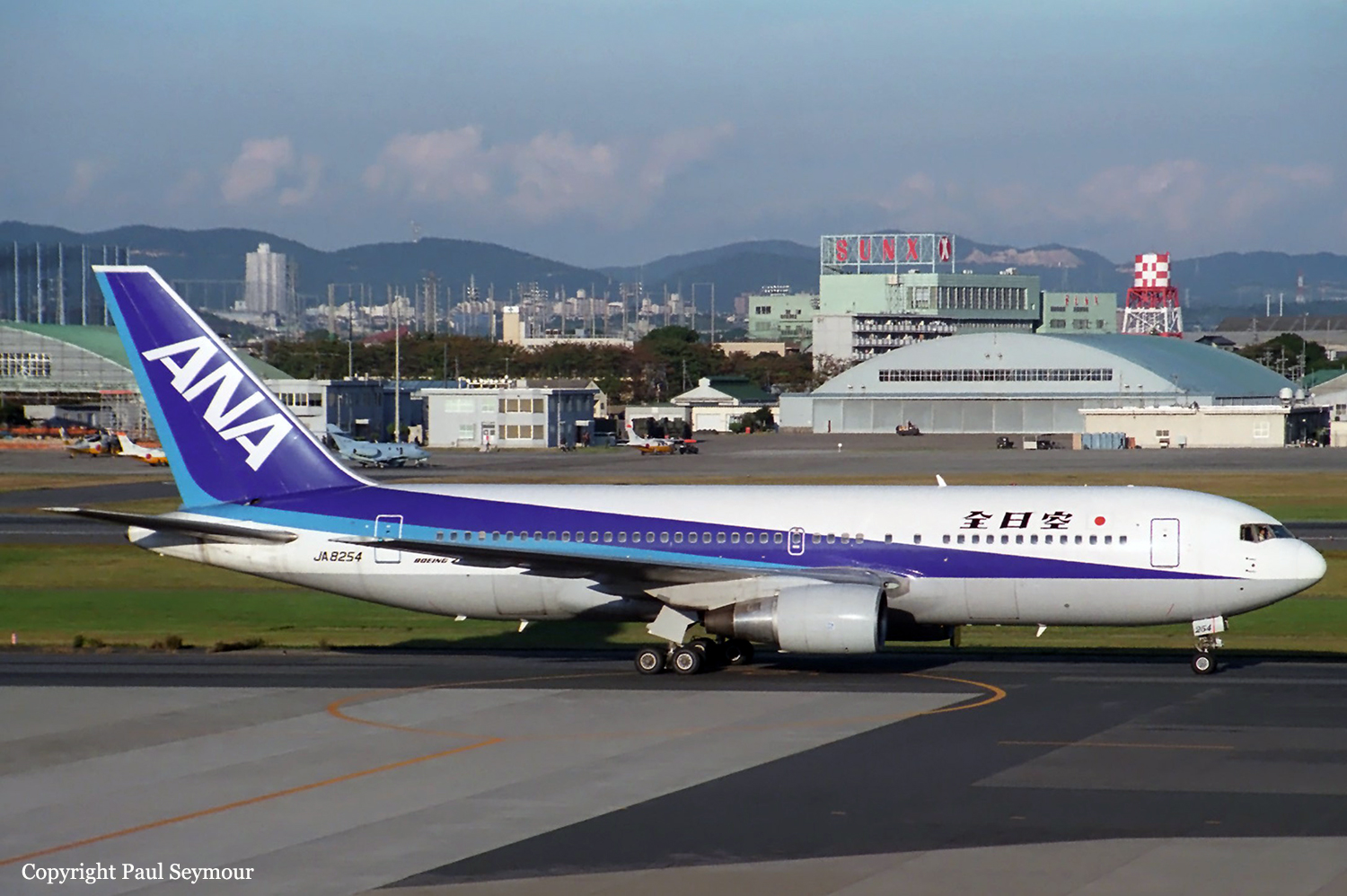
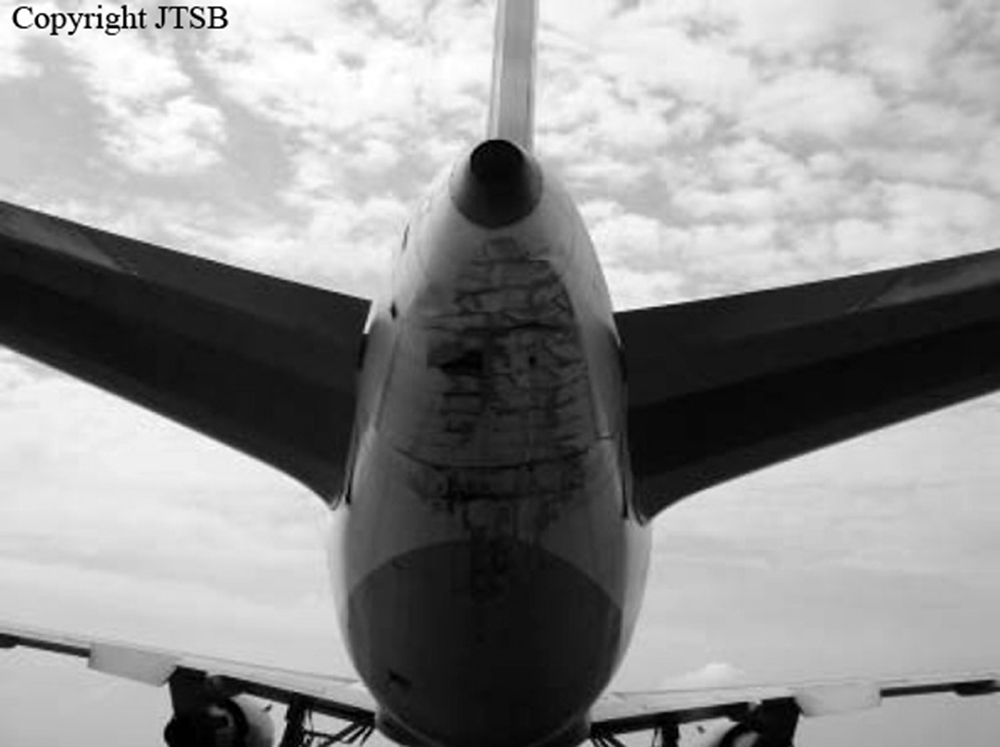
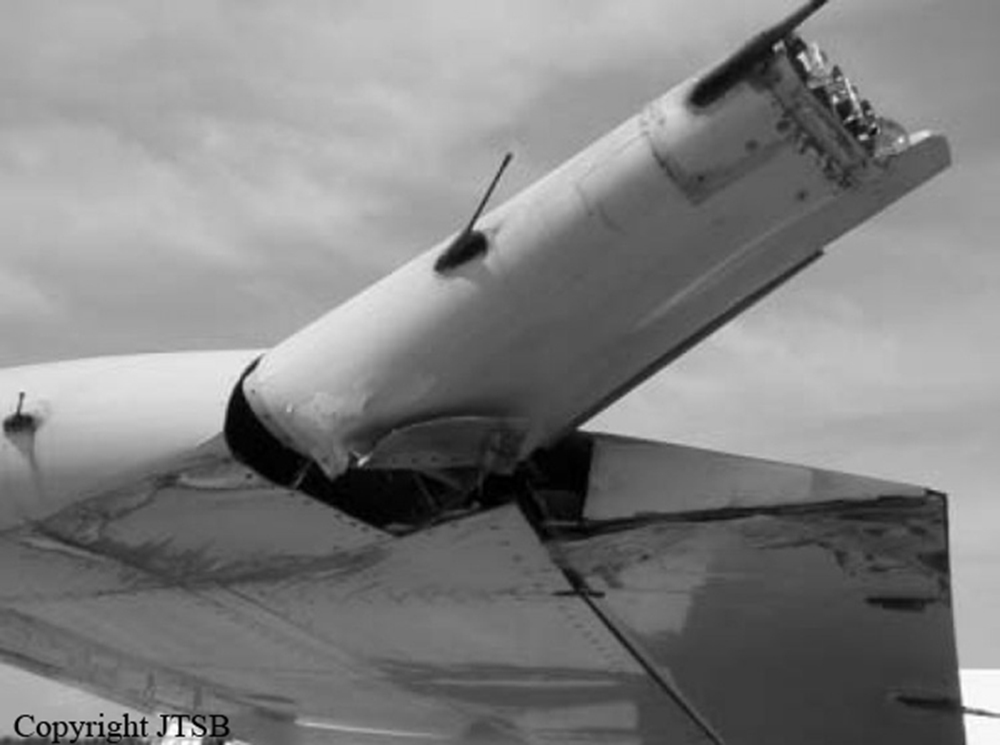
Crash of a Boeing 737-2Q3 in Ishigaki
Date & Time:
Aug 26, 1982 at 1349 LT
Registration:
JA8444
Survivors:
Yes
Schedule:
Naha - Ishigaki
MSN:
21477
YOM:
1978
Flight number:
NU611
Crew on board:
5
Crew fatalities:
Pax on board:
133
Pax fatalities:
Other fatalities:
Total fatalities:
0
Captain / Total hours on type:
1666.00
Copilot / Total hours on type:
878
Aircraft flight hours:
5056
Circumstances:
The airplane departed Naha Airport at 1309LT on a schedule service (NU611) to Ishigaki Island, carrying 133 passengers and a crew of five. Following an uneventful flight at an altitude of 24,000 feet, the crew was cleared to descend to 8,000 then 3,000 feet on approach. Runway 22 was in use at Ishigaki Airport with wind from 300° at 12 knots and an OAT of 32° C. Landing was completed with crosswinds at a speed of 6 knots above Vref. The aircraft bounced and landed a second time. After touchdown, as the spoilers and reversers seems to be inoperative, the crew decided to shut down both engines, making it impossible to use the anti-skid system. The inner tires on both main gears burst almost simultaneously while at a distance of 125 meters from the runway end. The aircraft skidded to the left, overran and came to rest 145 meters further. All 138 occupants evacuated quickly, among them 49 were injured. Twelve minutes later, one of the engine exploded and caught fire. The airplane was partially destroyed by fire.
Final Report:



